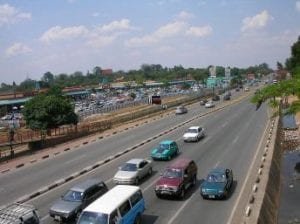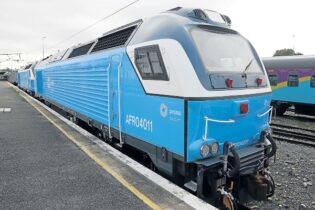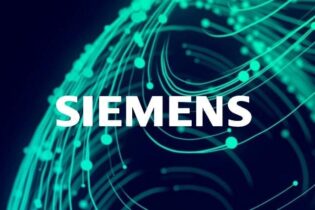Zambia’s overall petroleum needs are supplied through imports as the country does not have any established reserves of crude oil. The petroleum industry in Zambia is made up of TAZAMA Pipelines, which is owned by the Governments of Zambia and Tanzania; Indeni Refinery, which is jointly owned by the Government of Zambia and an international oil company, Total Outre mer; and the Ndola Fuel Terminal, which is also owned by the Government of Zambia.
There are 18 Oil Marketing Companies (OMCs) involved in the distribution and retailing of petroleum products. The downstream is made up of various fuel transporters and dealers contracted by OMCs to transport fuel by road from the fuel terminal and operate service stations respectively. Wholesale petroleum prices are regulated by the Energy Regulation Board (ERB) due to the monopolistic nature of the industry. Indeni currently carries out the importation of feedstock. With respect to pump prices, the Government liberalised pump prices in June 2001 as part of its economic reforms. ERB therefore takes on an ex-post monitoring role for pump prices whilst regulating ex-refinery gate prices. There are established margins for OMCs, dealers and transporters and the ERB ensures that prices remain in a reasonable band to ensure that the consumer is not overcharged. .Pricing of Petroleum Products The pricing of these products was initially on a cost build-up (cost plus) basis. However this approach did not provide any incentive to the crude oil importer and refinery to improve efficiency. In June 2004 therefore the ERB introduced Import Parity Pricing (IPP) of petroleum products. The refinery’s wholesale prices for petroleum products are benchmarked to the cost of buying a finished product on the world market and transporting it to the market in Zambia. In order to allow for fair comparability, it is assumed that the landed cost of the finished product would be calculated as the CIF price to the sea port (Dar-es-salaam) plus the equivalent cost of transportation using a combination of rail and road transportation (rail/rode mode). ). A discount factor is also applied to the determined IPP price. The purpose of this is to take account of the benefits of the country owning the infrastructure, i.e. the TAZAMA pipeline. Petroleum prices in Zambia at present, however, are determined through the Cost-Plus Pricing Model (CPM). This model has been in effect since January 2008 after the Import Parity Pricing Model which had been in use since 2004 was discontinued following concerns raised by stakeholders. The CPM is used to determine prices for each cargo and provides for longer intervals of price stability. It therefore takes into account all costs associated with the purchase of the feedstock. The total cost is converted into Kwacha (ZMW) using a projected US$ to Kwacha exchange rate. The rate is assumed to be the rate that will be in effect at the time that the buyer will need to purchase US dollars for making payments to suppliers and service providers during the life of the petroleum feedstock cargo. The CPM, therefore, ensures that all costs incurred in the procurement of feedstock are recovered through sales of petroleum products. This is necessary in order to collect all the funds incurred when purchasing the particular cargo. Zambia Fuel Usage
The current demand for the petroleum products in the country is around 52 million litres per month in which gasoline and diesel fuel is approx. 30 million litres per month and petrol approx. 10 million litres per month. It is projected to grow by an average of about 40% per annum. The 3 main suppliers of fuel in the country are as follow:
• Indeni Oil Refinery
• Petrotech Oil Corporation
• Dalbit Oil Corporation
- The focus by OPEC producing countries on increasing their market share
- Slow and deteriorating EU economies and the slowing of Asian economies, leading to a significant reduction in demand levels
- Significant growth in the U.S. domestic crude oil production
The country has changed its currency from the old Zambia Kwacha ZMk* to the new Zambia kwacha ZMW. The current exchange rate to the US dollar is 1U$/6.56168 ZMW (10/02/2015). The ZMW has maintained its strength against the US dollar over the past two years, and as such, has not impacted significantly on the fuel price. The Future
Given the current situation, and taking into account the brent crude oil predictions and currency exchange factors, Eqstra anticipates that the Zambian fuel price will increase between 5 – 7% until December 2015. It therefore recommends that an annual inflation of at least 7% is budgeted for fuel in 2015. The company also recommends that you review your fleet mix and operational costs at least every two years to ensure you optimise cost and efficiency within your fleet.








